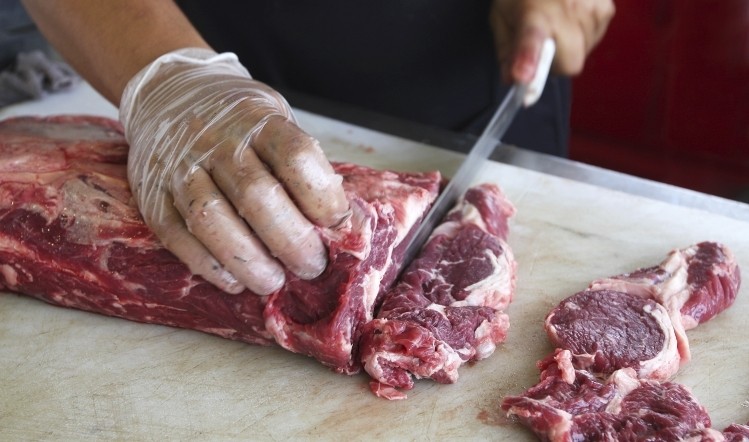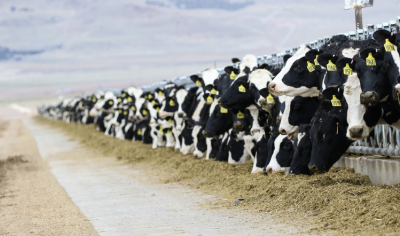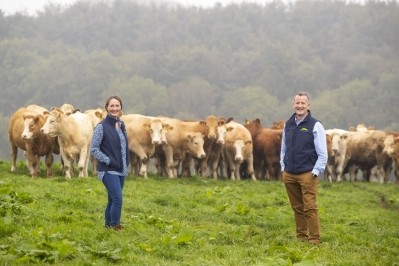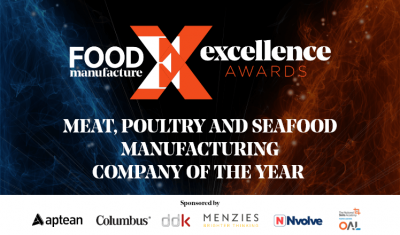Long read
Renewing the public's taste for meat

Adventurer Bear Grylls has very publicly ditched his vegan diet for meat, while a group of leading academics are challenging research linking red meat consumption to ill health.
“Meat processors should take heart because meat consumption has not changed much in recent years despite the media hype around meat reduction, Veganuary, and all of the meat alternatives coming onto the market,” says Mathew Simpson, sales manager, CSB-System.
“Veganism has remained at around 3% of the population for years. Red meat consumption is indeed declining, but quite slowly whilst consumption of poultry meat has increased. The decline in red meat consumption seems to be driven by meat reducers rather than a great wave of new vegetarians or vegans.”
Lucas Daglish, sustainability manager at the British Meat Processors Association, agrees. “We would acknowledge there is a threat to meat products but it’s more vocalising, as opposed to consumer shift change.”
Among meat reducers are both cash-strapped consumers cutting back, and “possibly more affluent consumers looking to consume less but better quality,” says Daglish. “They’re quite happy to pay more for organic, pasture reared or high welfare, and buy more from farm shops or high street butchers they feel are supplying a local or more ethically-sourced product.”
Ian Bentley, president of the Scottish Association of Meat Wholesalers (SAMW), says: “Judging by the amount of airtime adverts for non-meat and/or flexi products attract on national TV, one would be forgiven for thinking that all of the British population has given up eating red meat.
“Thankfully this is not the case. In fact, the credentials of red meat as an invaluable source of vital vitamins and minerals is increasingly gaining more recognition and traction with the general public. Data from market analysts suggests that around 95% of people buy and consume red meat every week.”
Challenging links between red meat and ill health
With health concerns cited as a key driver for consumers cutting back on red meat, Global Burden of Diseases, Injuries and Risk Factors Study (GBD) data linking red meat consumption to heart disease, strokes, diabetes and cancers is currently facing a challenge.
Six leading academics, including professors Alice Stanton, Chris Elliott and Patrick Wall, wrote a letter appearing in The Lancet earlier this year calling on GBD to publish the evidence behind its latest report.
With the GBD report underpinning many other studies including the National Food Strategy and the Food Standard Agency’s five-year strategy, “it’s actually a huge misinformation issue that consumers are completely blind to,” says Daglish.
At a recent conference of the European Livestock and Meat Trades Union, Simpson says Prof Wall stressed the meat industry should actually be talking up the health benefits of meat, particularly for older people who need high protein density foods to maintain muscle mass and women who may struggle to maintain healthy iron levels.
Kelly Eastwood, insight director at Pilgrim’s UK, says: “We know that some consumers are trying to eat less meat for a range of reasons, which could be around health, animal welfare and sustainability. Discussions in the media and on social media have created negative perceptions around the meat industry that aren’t always accurate.”
Growing focus on sustainability credentials
Communicating its sustainability credentials is another focus for the meat and poultry sectors.
Pilgrim’s UK has committed to reaching net zero in its own operations by 2030 and across its entire supply chain by 2035.
“We’re doing this through working with the best producers to deliver lower greenhouse gas (GHG) emissions, investing further in R&D, and through promoting the sharing of best practice in the sector,” says Eastwood.
“Alignment on definitions and standards for measuring GHG reduction targets will be crucial moving forwards, ensuring targets and reporting are aligned to science-based targets. Businesses that aren’t making this transition simply won’t be trading in the future.”
High welfare production and sustainability go hand in hand, says Eastwood, with the breeding herds of Pilgrim’s 340 pig farming partners living outdoors and forming part of a mixed rotation farming system, alternating with arable crops to help keep the land healthy and fertile.
Meat processors also lead in combatting food waste. “Part of that has involved working to create a market for different cuts of meat that might not have been so popular in the past,” she says. “We work with tougher cuts of meat like pork shoulder, for example, to create dishes like pulled pork.”
With efficiency vital to profitability, investment in sustainability from solar roof panels to anaerobic digesters has long been a focus, says Daglish.
“A lot of it is driven by processors’ customers, the supermarkets and hospitality, which are starting to gather data for their science-based targets and scope 3 emissions,” he says. However, gathering data from more than 40,000 farms across the UK operating to varying standards will be far from simple.
Simpson highlights the progress made at national level, through schemes such as Origin Green in Ireland and Red Tractor in the UK, as well as company level.
“Progressive meat businesses such as Dunbia or ABP are committed to improving environmental sustainability right along the supply chain,” he says. “These goals are in any case aligned with the need to remain competitive and profitable, because reductions in carbon, energy consumption and water all contribute to reduced costs in the long run.”
Cost-of-living and doing-business crises
Becoming more sustainable is at the forefront of SAMW members’ business strategy and investment decisions, says Bentley.
“The intense pressures on our margins due to the cost-of-living squeeze leads us to be constantly looking at making our processing and production processes throughout the factory as carbon neutral as we can achieve,” he says.
Processors are facing rising input costs, a shortage of skilled labour and C02, and high regulatory compliance costs, as well as a drop in consumers’ discretionary spending.
“There is evidence that some, but not all, consumers are trading down to lower value cuts which makes the processors’ primary task of achieving carcase balance all the more challenging,” says Bentley.
Kantar retail sales data supplied by AHDB for the 52 weeks to October 30 indicates value and volume sales respectively down by 3.6% and 10.7% for beef, 11.8% and 19.1% for lamb and 1% and 6.4% for pork. Year on year, prices were up by 8%, 9.1% and 5.8% for beef, lamb and pork.
In the 12 weeks to October 30, volume sales were down across all three species, with lamb the only category not growing its value sales as a result of inflation.
However, meat often emerges as a more affordable option than alternative proteins.
Loosely comparing Tesco pricing in late November, Daglish found a per kilo cost of £5.70 for beef mince against £6.50 for meat-free mince and £6.07 for chicken breast fillets against £16.67 for a vegan chicken breast equivalent.
“Meat is still great value without getting into all the detail around nutrients and the hidden benefits of having it as part of a healthy and balanced diet,” says Daglish.
Eastwood agrees: “Many of the current plant-based meat alternatives are actually more expensive and offer minimal nutritional benefit compared to meat products, which can be prohibitive for consumers.
“And there can be a lot of greenwashing in this area; some plant-based products that appear to be green can be highly processed and are shipped thousands of miles around the world.”
Simon Jubb, divisional manager at Interfood Technology, highlights opportunities around cheaper, slow cook cuts such as beef shin, ox cheek and lamb neck in line alongside the rising use of slow cookers as a means of reducing energy usage.
“Microwaving has also been shown to be a particularly cost-effective way of cooking,” he says. “There is significant potential for product development in this area. At present, the range of different microwaveable sausages on the market is very limited.
“Sales of chicken are also holding up well as a low cost per kilo option. According to the British Poultry Council, people in the UK eat, on average, 35kg of poultry meat annually. Pork-based products also remain competitive.”
As consumers increasingly opt for cheaper cuts, carcase balance - already challenged by the impact of Brexit on exports – becomes an issue.
“Promoting lower cost cuts of meat is not really an effective strategy unless there is an alternative outlet for the more expensive cuts, for example exporting to a market which is not suffering recession,” says Simpson.
Brexit has created red tape issues around exporting, says Daglish, with some of the smaller lamb processors finding it no longer worth their while to export to continental markets such as Germany, France and Switzerland.
“For almost every single animal that is killed in the UK, one part of that animal will be exported which I don’t think people realise,” he says. “Whether it’s offal, hides, bones, secondary cuts, or heads, there’s a market for it elsewhere and clearly Brexit has increased the administrative burden of those exports.”
















